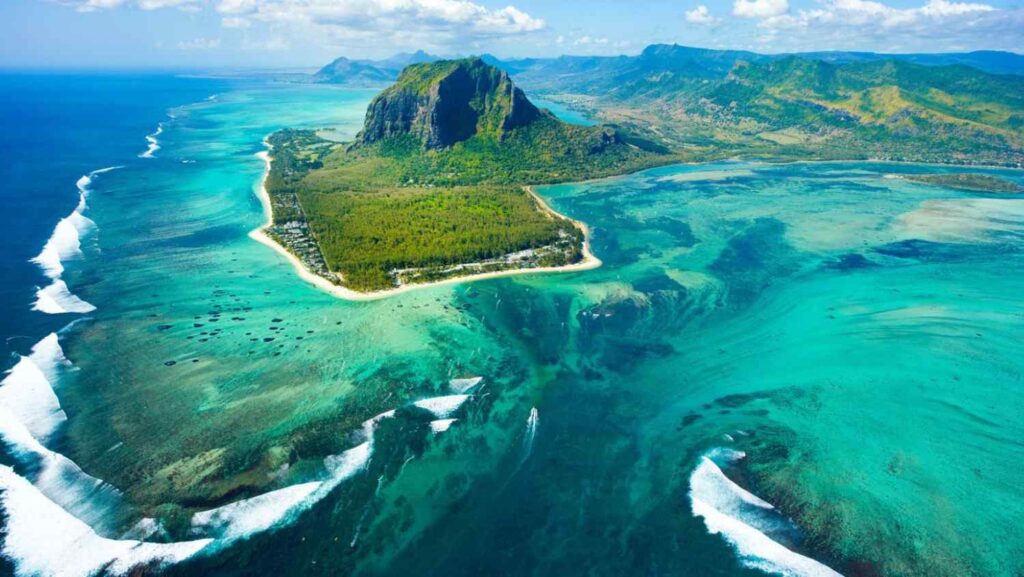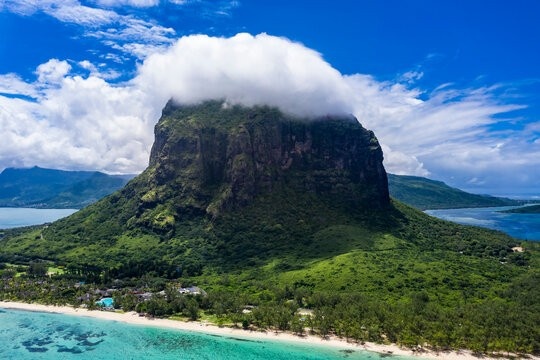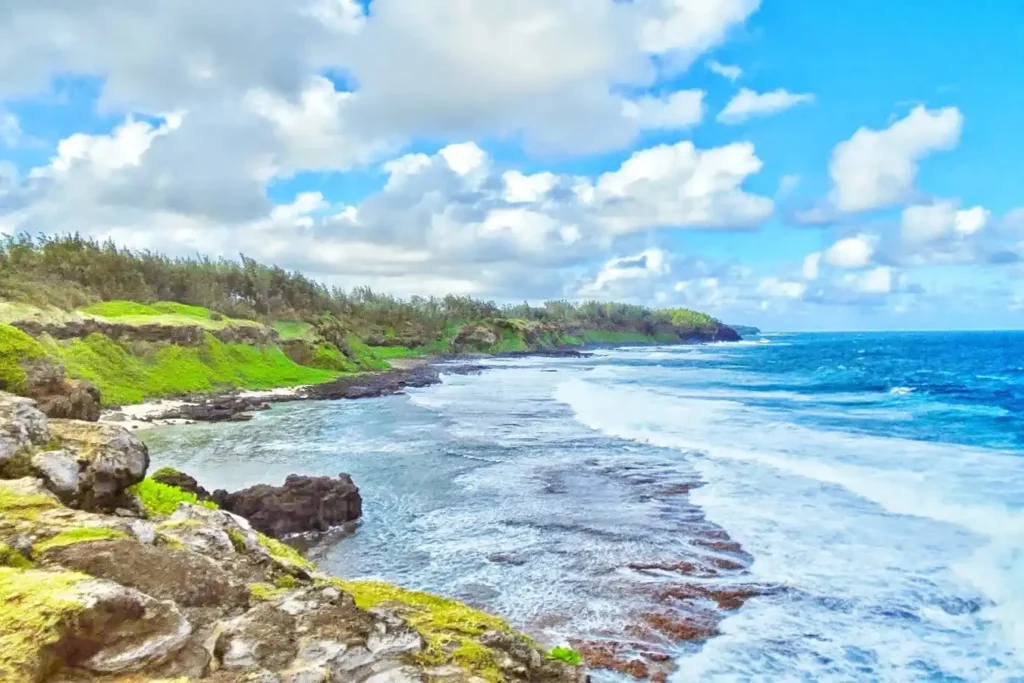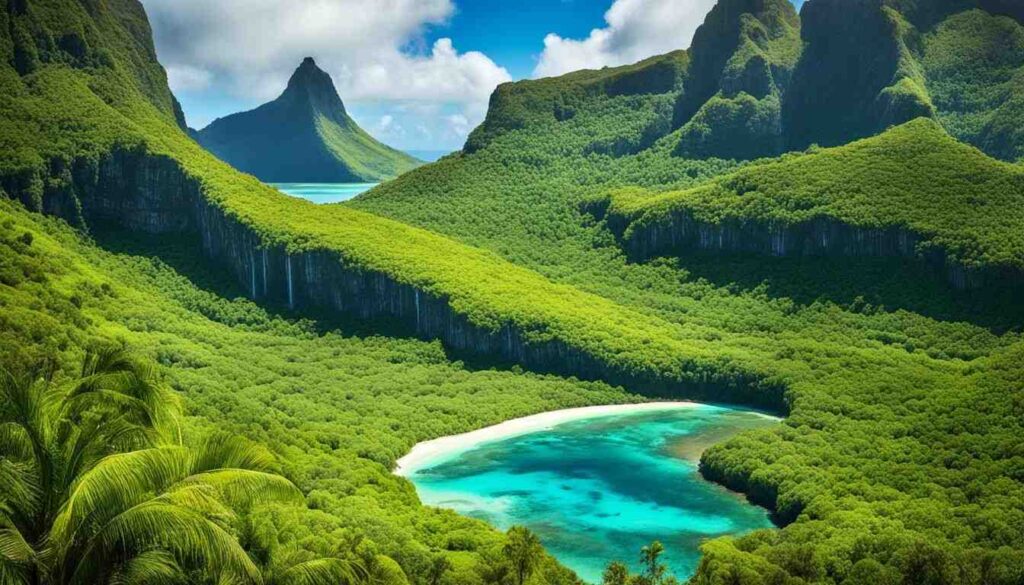Introduction: Witnessing the Impossible
Imagine the ocean itself pouring into a never-ending nothingness, a blue and white whirlpool spinning down into the Earth’s core. It isn’t a film set; it’s the breathtaking reality of Mauritius underwater waterfall. Situated off the south-western corner of this tropical paradise, this illusion is one of the world’s finest optical illusions, a stunning image of nature’s imagination that cannot be conceived until it is beheld. This definitive guide outlines the magic, science, and sheer magic of this wonder and provides you with everything you’ll require to plan an experience to treasure.

Unveiling Magic: The 7 Pillars of the Illusion
This stunning wonder’s very existence balances precariously on seven interdependent columns of world building. Awareness of them transforms a beautiful landscape into an overwhelming feeling of awe at world potential.
1. The Geological Foundation: A Prehistoric Submarine Canyon
Millions of years of volcanic and tectonic activity folded the seafloor east of Mauritius. The sudden basis for the illusion is a deep-sea trench of gigantic width—a submarine canyon rimmed by cliffs more than 4,000 meters (13,000+ feet) high. This chasmic plunge is the “cliff edge” the visual illusion slips over to create the plummeting feeling of depth typical of Mauritius underwater waterfall.
2. The Source of Sediment: Sand Rivers
The stunning white “flow” of the waterfall is sunlight reflecting off sand and silt being dragged off the coastal shelf by ocean currents. The sand is from island beaches and is delivered from island interiors by rivers, replenishing the coastal shelves in fresh abundance continuously. The gimmick would not work if there were not an endless supply of sand, so the landscape of the island is a silent accomplice to this geological illusion.
3. The Ocean Engine
Currents of Power Between sea and Le Morne Brabant, the sea is constantly in motion. There are constant and forceful south-southwest ocean currents along the length of this section, which act as a lorry with cargo. They power the engine of the fraud, constantly drawing the sand off the seafloor to the perimeter, in a constant streaming motion that can be observed from above.
4. The Contrasts Art: Our Light Sand, Dark Blue
Reality is perception. The visual beauty of Mauritius underwater waterfall is based on the dramatic contrast of light-colored sand wearing away off the shelf and dark, deep blue-violet of seafloor bottoms hundreds of feet below. It is on this contrast that the human eye and camera sensors perceive a vertical plunge, approximating the foamy appearance of a cataracting waterfall.
5. The Aerial View: The Single Perspective
This is a painting built in bird’s-eye terms. The illusion must be accurately concealed from the seashore or boat. It will only be at high altitude in a helicopter or seaplane possessing the parallax point of view and overall size of the sediment flow added together to provide the naturalistic 3D look of a cascade. This necessity of overhead perspective is what makes it such an exciting and new piece of work.
6. The Ideal Scene: The Le Morne Peninsula
No exception is it. It is the backdrop of picturesque Le Morne Brabant, which is a UNESCO World Heritage place. Basalt monolith provides amphitheater-like scenery, and its coral reef-fringed lagoon enables the sea to remain flat and glassy, thereby exposing submersed constructions made of sand. A trip to Rajput’s natural and cultural site of Le Morne is an ideal sequel to a flight. Find out more about it on our very own special Southwest Mauritius tours.

7. The Element of Light: The Sun’s Role
Sunlight is the final column. The illusion is brightest and most photogenic on sunbaked, cloudless days, usually around midday. The sun sits high in the sky over the water, cutting into the water, stripping away surface glinting, lighting the white sand against black nothingness, collapsing the entire picture into an eye-scalding high-contrast natural portrait.
How to Live through the Phenomenon: A Practical Handbook
• Helicopter Flight: Best choice. Offers spectacular, unobstructed views, flight experience, and window seats to everyone assured. Expert guided flights by experts with commentaries can be availed with Air Mauritius.
• Seaplane Flight: Classic, old-fashioned choice. Unobstructed view is offered by high wing, and departure from water is also just as thrilling.
• Booking Tip: Book your flight for the middle of your visit. This allows flexibility in case the weather is bad, which will result in cancellation. Book your flight first thing in the morning for the smoothest air and best light.
Discovering Mauritius: North vs. South Adventures
Mauritius underwater waterfall is a gem of the south coast’s wilder, more rugged side. Mauritius has a varied array of experiences to offer, though.
• The Dynamic North: Here, Port Louis, the vibrant capital, and its dynamic resorts, the horticultural treasures of Pamplemousses Garden, and cosmopolitan beaches of Grand Baie, all beckon you. The north thrums with a beat of culture and dynamism. Bite into this side of the island by just glancing at our dynamic North Island holidays.
• The Wild South: Features gigantic cliffs, secret beaches, and untouched natural scenery. Among the gem attractions are the Seven Colored Earth of Chamarel, holy crater of Grand Bassin, and the stunning Gris Gris cliffs. The south is also flavored with adventure and peace.

Frequently Asked Questions (FAQs)
Q1: Is the Mauritius underwater waterfall a real waterfall?
A: No, it is not a waterfall in the traditional sense. It is a stunning optical illusion created by sand and silt on the beach by ocean currents over an underwater cliff into the ocean’s depth, the complete visual twin of a waterfall.
Q2: Can the Mauritius underwater waterfall be seen from the beach or on a ship?
A: No, the illusion is totally invisible from sea level. One can only see it from the air, from a helicopter, a seaplane, or from a drone (permission granted).
Q3: What would be the best time of day to take a flight tour?
A: Late morning, 10:00 AM to 2:00 PM, on a clear sunny day is ideal. The sun’s height decreases water surface glare and the best available light to achieve maximum contrast of sand over black ocean.
Q4: How much do helicopter tour charges cost for observing the Mauritius underwater waterfall?
A: Prices vary based on operator and length of tour (usually in addition to other sites). Budget around $200 to $400 USD per person for a private flight.
Q5: Taking the plane over the area, is it safe?
A: Yes, absolutely. Mauritius tour operators are strictly licensed, highly professional, and operate modern well-maintained aircraft with excellent pilots. It’s a highly regulated and safe experience.
Q6: Besides the flight, what more can be done around and within the place?
A: Le Morne Peninsula, a World Heritage site, has stunning hiking up Le Morne Brabant mountain, fantastic kitesurfing at the lagoon, and quite nice beaches. Booking your flight for a visit to Chamarel is highly recommended.
Conclusion: A Tribute to Nature’s Biodiversity
Mauritius underwater waterfall is not an illusion; it is a tempestuous concerto of geological time, ocean power, and elemental loveliness. It is comforting evidence that there remain things our world keeps hidden. To see it is to be blessed—a blessing to resee the world and never forget its grandeur again. It is the unequivocal, piece de resistance of a Mauritian odyssey, to leave one breathless.

